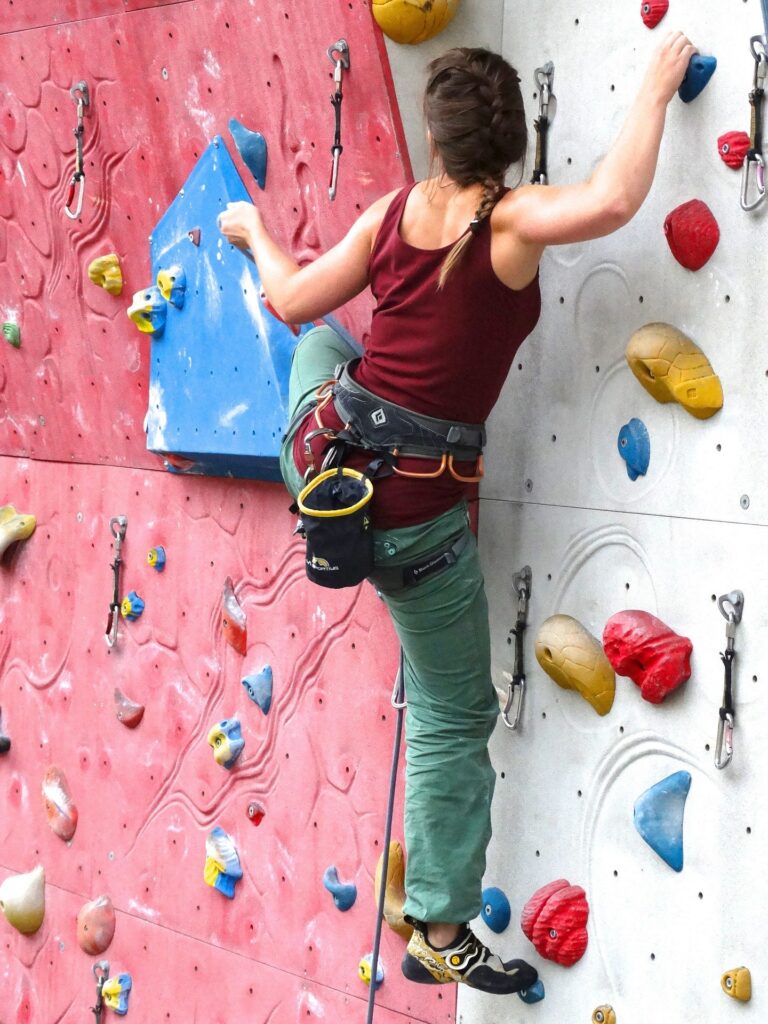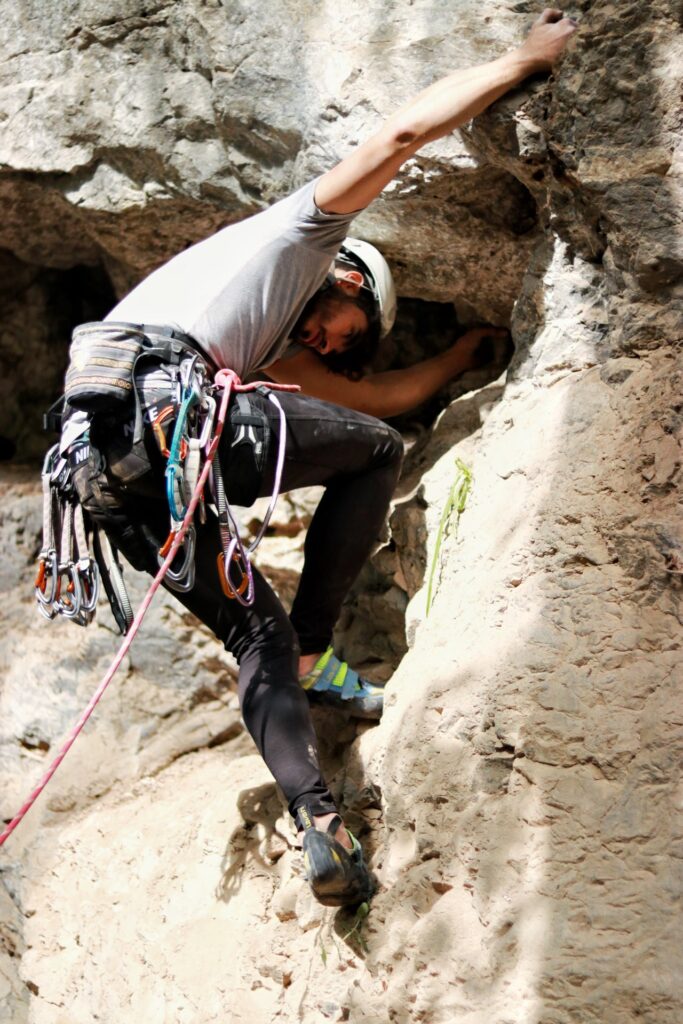Climbers’ Feet & Bunions: Causes, Treatments & How Climbing Shoes Make Bunions Worse
Blame it on Alex Honnold and Free Solo. Or American Ninja Warrior. Or the explosion of indoor climbing gyms and the scores of people leaving the coasts for the mountains. The popularity of rock climbing continues to grow both in the US and worldwide; in fact, sport rock climbing will make its debut at the Summer Olympics in Tokyo, Japan, in 2021.
No matter what type of climbing you enjoy – indoor, outdoor, top rope, lead climbing, bouldering, etc. – there is one thing that all climbers have in common: getting used to uncomfortable climbing shoes. Thankfully, when it comes to determining the right fit for climbing shoes, the age-old adage of the tighter, the better, has been debunked.
Common Rock Climbing Foot Injuries
Despite the fact that lower extremity climbing injuries are often overlooked, almost 50% of acute rock climbing injuries involve the legs or feet. In addition to acute injuries, climbers often suffer from chronic foot injuries and conditions, such as hallux rigidus, hammertoe and sesamoiditis.

Rock climbers also experience their fair share of bunions. While medical experts disagree on whether tight, too-narrow shoes (ahem… climbing shoes) cause bunions or if restrictive footwear merely contributes to their formation, the answer to this chicken and egg situation is inconsequential for most climbers.
What are bunions?
Bunions are a slow-developing condition where a bony bump forms on the inside of the foot at the metatarsophalangeal joint (MTP or big toe joint). Often called hallux valgus, repeated pressure on the joint of the big toe can lead to structural changes and result in a painful deformity that makes it difficult to walk, wear shoes, run – or climb.
Tailor’s Bunions
Commonly overlooked in the world of bunions, Tailor’s bunions (aka bunionettes) form on the outside of the little toe. Tailor’s bunions occur more often in women than men, which is often attributed to high heels. Likewise, tight, narrow climbing shoes can have the same effect.
Bunion Causes, Symptoms & Diagnosis
As mentioned earlier, the precise cause of bunions is unknown. There are, however, commonly accepted causes and risk factors.
Common Bunion Causes & Risk Factors
- Heredity. Bunions tend to develop due to deformities in inherited foot structure and anatomy.
- Rheumatoid arthritis. People with RA are more likely to develop bunions.
- High heels. Heels crowd toes by forcing them to the front of the shoe and apply pressure on the MTP joint.
- Tight, narrow or pointed shoes. Ill-fitting shoes, particularly shoes with a narrow, pointed toe box (aka climbing shoes) that force toes into unnatural positions, can lead to bunions.
Common Tailor’s Bunion Causes & Risk Factors
- Heredity
- Tight, narrow or pointed shoes
- Ligamentous laxity (i.e. loose ligaments)
- Fifth metatarsal bone is lower than normal
- Foot that leans to the outside or activities that put repeated pressure on the outside of the foot
- Tight calf muscles
Bunion Symptoms
Both regular bunions and tailor’s bunions present with the same general symptoms.
- Bulging bump on the outside of the base of the big toe or on the outside of the base of the little toe (tailor’s bunion)
- Swelling, redness and inflammation
- Stiffness and/or restricted motion in the big toe
- Ongoing pain or pain that comes and goes
- Calluses and corn – usually where toes are forced to rub against each other
- Hardened skin on the bottom of the foot
Bunion Diagnosis
First and foremost, you need to know when to see a foot doctor. If you are in severe pain or if your condition is keeping you from living a normal life and doing the things you enjoy, it’s time to see a podiatrist.

Although a podiatrist will most likely be able to diagnose your bunion based on the appearance of your foot and your symptoms, he or she might order an X-ray to determine how severe your malalignment is by measuring the angle between certain bones in your foot.
Nonsurgical Bunion Treatments
If your bunion is mild or just forming, a podiatrist will most likely recommend nonsurgical treatments, such as changes in footwear, icing, orthotics or nonsteroidal anti-inflammatory medications (NSAIDs). Though bunions can’t be reversed, nonsurgical treatments can reduce pain and keep the bunion or tailor’s bunion from worsening.
Bunionectomy (aka Bunion Surgery)
While a bunionectomy is usually a procedure of last resort for most bunions, many climbers opt to have the surgery to be able to climb comfortably again.
There are several different techniques for bunion surgeries; your orthopedic foot and ankle surgeon will determine which is best for your individual case. In general, a bunionectomy realigns bones, ligaments, tendons and nerves in the foot in order to bring the big toe back into the correct position and/or removing swollen tissue from the big toe joint.

Tailor’s Bunion Surgery
Tailor’s bunion surgery can be as simple as shaving off the bunion. More often than not, however, this surgery also includes repositioning the bone to improve the alignment of the fifth metatarsal bone.
Bunion Surgery Recovery
You can expect pain and swelling directly after surgery, but rest, ice and elevation will help in the first few days post-op. Your orthopedic surgeon will prescribe a surgical boot and will recommend foot and toe exercises to keep your foot from becoming stiff.
While a bunionectomy can fix a bunion, genetic factors – and too-tight climbing shoes – may cause it to return.
If you have further questions about bunions, foot injuries or any pain you may be experiencing, please feel free to contact us.
1 Comment
Permalink
This is essential information for everyone, thanks a lot!
And if you want to know more about Bunions and how you’re going to treat this problem, try to visit this site. https://calgarypodiatry.ca/treatment-for-bunion/